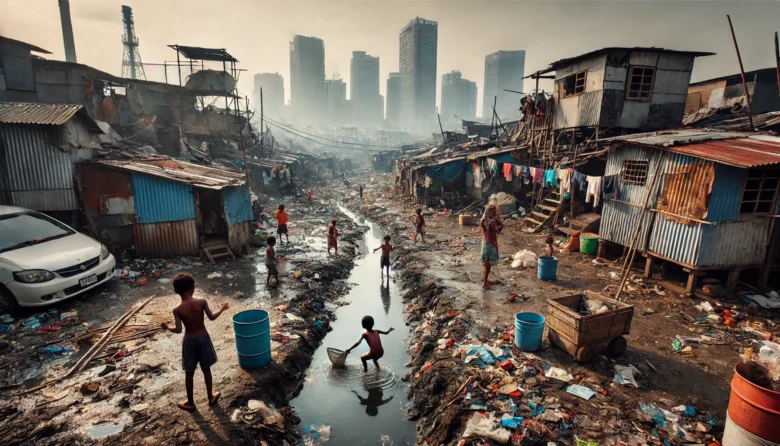Have you ever wondered why specific communities bear the brunt of environmental pollution more than others? This phenomenon is known as environmental racism, and it’s a significant issue that affects millions of people globally. In this blog, we will delve into the sociology of environmental racism, exploring how it manifests and impacts communities, particularly in India. By understanding this concept, we can better address and combat the inequalities it perpetuates.
Understanding Environmental Racism
Environmental racism involves the unequal burden of environmental hazards faced by marginalized communities. These communities, often comprising people of color and economically disadvantaged groups, face higher exposure to pollutants, lack access to clean air and water, and suffer from poor environmental policies. This issue stems from systemic inequalities and is deeply rooted in social, economic, and political structures.
The Sociology Behind Environmental Racism
The sociology of environmental racism involves studying the social dynamics contributing to these environmental injustices. It examines how historical, economic, and political factors shape the distribution of environmental risks. Sociologists analyze patterns of industrial placement, housing policies, and political representation to understand why certain communities are more vulnerable to environmental harm.
In India, caste and economic status play significant roles in environmental racism. Lower-caste and economically disadvantaged communities often live in areas with high pollution levels, poor sanitation, and inadequate infrastructure. These communities lack the political power to advocate for better living conditions, leading to a cycle of neglect and exploitation.
Case Studies and Examples
Bhopal Gas Disaster: A tragic instance of environmental racism in India is the Bhopal Gas Disaster that occurred in 1984. The disaster occurred in a densely populated area predominantly inhabited by economically disadvantaged people. The lack of stringent safety measures and the subsequent inadequate response highlighted the systemic neglect of marginalized communities.
Kodaikanal Mercury Poisoning: In the early 2000s, workers at a thermometer factory in Kodaikanal, Tamil Nadu, were exposed to mercury poisoning. The factory, owned by Hindustan Unilever, was located in a region inhabited by lower-income families. The health impacts on the workers and the local environment were severe, but the response to address the contamination was slow and inadequate.
Urban Slums and Air Pollution: Cities like Delhi and Mumbai face severe air pollution problems. However, the worst effects are felt in urban slums, where people live in close proximity to industrial zones and traffic-congested areas. These communities often lack adequate healthcare access and need to be more frequently considered in policy-making decisions.
Environmental Racism in Rajasthan
Rajasthan, with its unique socio-economic landscape, also faces instances of environmental racism. The mining industry, a significant part of the state’s economy, has led to severe environmental degradation in certain areas. Communities living near mines, often belonging to lower castes and tribes, suffer from water contamination, air pollution, and health issues. Despite the economic benefits of mining, the environmental costs are disproportionately borne by these marginalized groups.
Another example is the Bishnoi community, which is known for its environmental conservation efforts. Despite its contributions to protecting wildlife and forests, it faces challenges from industrial encroachments and inadequate government support.

Addressing Environmental Racism
To tackle environmental racism, it’s essential to adopt a multi-faceted approach:
Policy Reforms: Stronger environmental regulations and policies prioritizing marginalized communities’ needs are crucial. This includes enforcing stricter pollution controls, ensuring safe living conditions, and providing clean water and air access.
Community Empowerment: Empowering affected communities through education, advocacy, and political representation can help them fight for their rights. Local movements and community groups are crucial in promoting awareness and advocating for change.
Corporate Accountability: Companies must be held accountable for their environmental impact. Adopting sustainable practices, conducting environmental impact assessments, and engaging with local communities can help mitigate environmental racism.
Public Awareness: Increasing public awareness about environmental racism is essential. Media, educational institutions, and NGOs can help highlight these issues and promote a more equitable approach to environmental protection.
Conclusion
Environmental racism is a critical issue that demands our attention and action. Understanding the sociology behind it can address the root causes and work towards a more just and sustainable future. In India, where social and economic inequalities are deeply entrenched, tackling environmental racism requires collective efforts from the government, corporations, and civil society. We should aim to build a world where everyone, irrespective of their background, has the right to a clean and healthy environment.
Author’s Note
Environmental justice goes beyond protecting the environment; it’s about guaranteeing that all communities can live in safe and healthy surroundings. Let’s continue to raise our voices and take action against environmental racism.
G.C., Ecosociosphere contributor.




